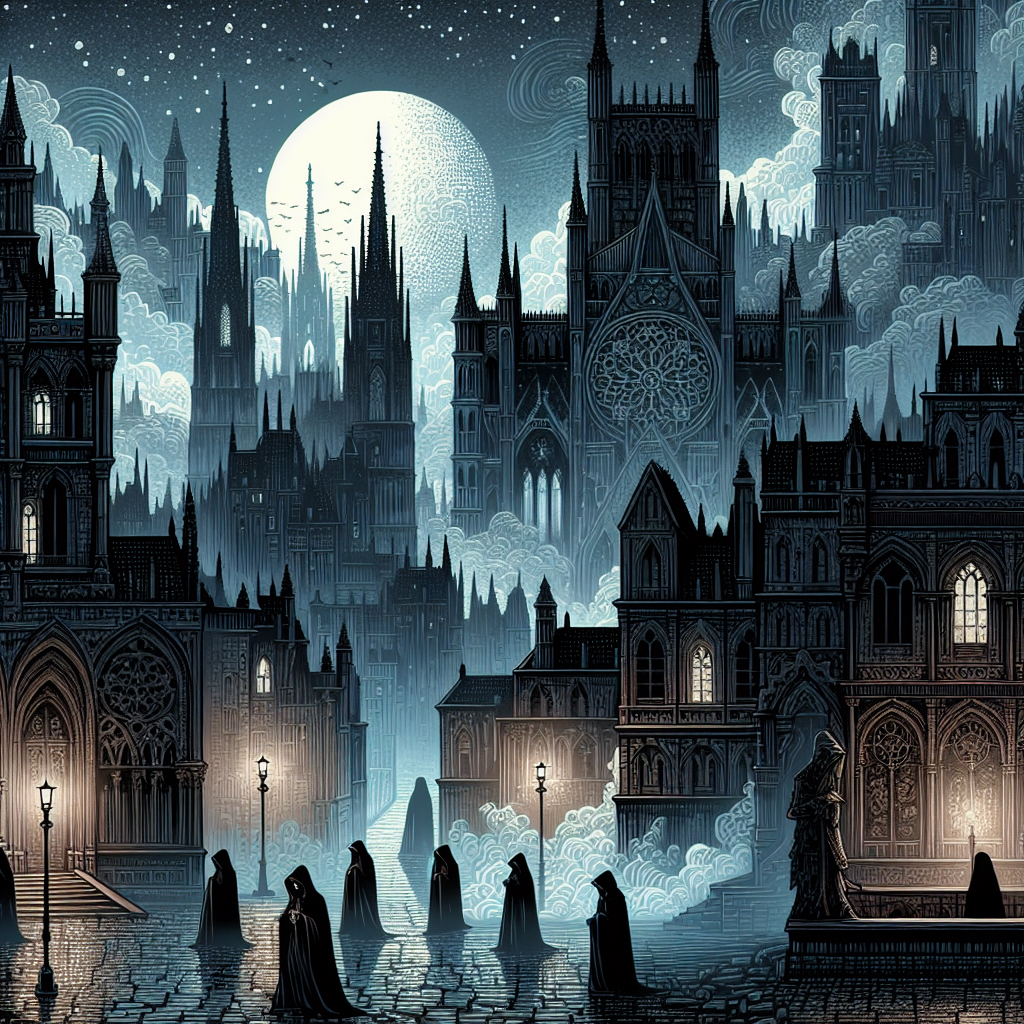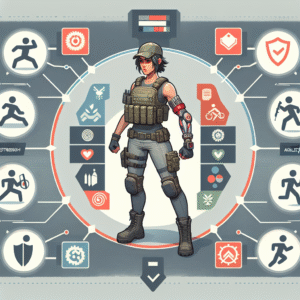Secrets of Yharnam: Unveiling Hidden Lore in Bloodborne
Discovering Yharnam: A Mysterious Journey
Yharnam, the gothic city central to the critically acclaimed game Bloodborne, weaves a tapestry of horror, intrigue, and mystery that has captivated players since its release in 2015. Developed by FromSoftware and directed by Hidetaka Miyazaki, the game introduces players to a world steeped in darkness, fear, and richly interwoven lore. The secrets of Yharnam are many, hidden deep within its cobblestone streets, shadowy corners, and the intricate web of its narrative.
Historical Context of Yharnam
Yharnam’s lore is deeply tied to the city’s historical and cultural context. Known for its ancient traditions, Yharnam was founded on the discovery of the Old Blood, a mysterious substance that promised healing and enlightenment but brought calamity instead. The Healing Church, a powerful institution, rose to prominence through its promotion of blood ministration. Initially seen as a miraculous cure, the blood led to the onset of the Scourge of the Beast, transforming citizens into horrifying monstrosities.
An ancient civilization, known as the Pthumerians, plays a crucial role in the unfolding narrative. As the original inhabitants of the labyrinthine Chalice Dungeons beneath Yharnam, they were both guardians and victims of the eldritch truths that haunted their society. Understanding the Pthumerians and their interactions with the Great Ones provides rich context to Yharnam’s unfolding tragedy.
The Great Ones and Their Influence
Central to Yharnam’s lore is the presence and influence of the Great Ones, enigmatic cosmic entities that reside beyond the comprehension of mere mortals. Their presence manifests through dreamlike states, profound visions, and the eerie ennui that permeates every aspect of the city. These beings are revered by the Healing Church and various factions within Yharnam, with some believing that communion with the Great Ones is the path to transcendence.
Several Great Ones play pivotal roles in the narrative. Ebrietas, Daughter of the Cosmos, is worshiped in secret by the Choir, a faction within the Healing Church devoted to attaining enlightenment through the celestial. Mergo’s Wet Nurse, a grim and foreboding presence, guards the infant Great One Mergo. In seeking communion with these entities, the citizens of Yharnam are unwittingly drawn into a cycle of horror and madness.
The Blood and Transformation
The concept of transformation is a recurring theme in Bloodborne’s lore. Central to this theme is the Old Blood, which promises healing but instead invokes grotesque mutations within its users. As players traverse Yharnam, they encounter evidence of the blood’s devastating effects. Statues of beast-like figures, townspeople transformed into nightmarish creatures, and scattered documents warn of the blood’s corruptive power.
Father Gascoigne, an early boss fight, symbolizes this tragic transformation. Once a compassionate priest, his descent into madness and brutality exemplifies the cost of reliance on the Old Blood. His story, a microcosm of Yharnam’s own fall, reinforces the game’s underlying message about the dangers of unchecked ambition and the pursuit of forbidden knowledge.
Factions and Their Secrets
Yharnam’s societal fabric is woven with numerous factions, each with their own objectives, secrets, and influence. The Healing Church stands out as a dominant force, wielding the power of the Old Blood. Yet, beneath its facade of benevolence lies a shadowy hierarchy filled with hidden agendas. The Choir and the School of Mensis are prominent sects that vie for greater understanding and control over the Great Ones.
The Hunters, a faction sworn to eradicate the beasts plaguing Yharnam, are often seen as tragic figures. Bound by their duty yet cursed by the hunt, they embody the endless cycle of violence that grips the city. Insight into their philosophy is revealed through enigmatic figures like Eileen the Crow and Gehrman, the First Hunter. Each has a story that adds depth to the game’s somber atmosphere.
In contrast, the Vilebloods of Cainhurst represent aristocratic decadence and rebellion against the Church’s doctrines. The rivalry between Cainhurst and the Healing Church underscores the political and mystical conflicts underpinning Yharnam’s social structure. Each faction’s secrets contribute to the game’s rich narrative tapestry.
The Role of Dreams and Nightmares
Dreams and nightmares are a fundamental aspect of Bloodborne’s storytelling, serving as both setting and symbol. The Hunter’s Dream, a serene yet haunting refuge, acts as a hub for players, but its nature is far from benign. The dream is revealed to be a prison, a manipulative construct orchestrated by the Great Ones to maintain control over the Hunters.
Explorations of the Nightmare of Mensis and the Nightmare Frontier further unravel the connection between the dream realm and reality. These alternate dimensions reveal the depths of knowledge sought by those who dare to commune with the Great Ones. The nightmarish landscapes are reflections of the cosmic horror themes underlying the game, challenging the player’s perceptions and resilience.
The Labyrinthine Chalice Dungeons
Beneath Yharnam lies an intricate network of Chalice Dungeons, remnants of the ancient Pthumerian civilization. These procedurally generated labyrinths are crucial to understanding the city’s past, offering insights into its forgotten history and the perils that accompanied its ascent.
The dungeons serve as a playground for adventurers seeking greater challenges and rewards. Yet, they also act as a narrative device, revealing the forgotten legacy of the Pthumerians and their interactions with the Great Ones. Symbols, artifacts, and cryptic messages scattered throughout these dungeons challenge players to piece together Yharnam’s shadowed history.
Unraveling the Mystery Through Lore
Bloodborne’s narrative complexity is augmented by its environmental storytelling. Item descriptions, dialogues with non-player characters (NPCs), and environmental cues intricately layer the game’s lore. This indirect storytelling approach encourages players to actively engage with the game world, piecing together its mysterious history.
Identifying meaningful connections reveals deeper layers within the story. The tragic fate of individual characters, like the forlorn and hauntingly beautiful Queen Annalise and the brilliant yet doomed scholar Micolash, is illuminated through these scattered pieces. The lore serves not only as a backdrop to the game’s action but as a vital component of the player’s journey.
The Undying Legacy of Yharnam
Bloodborne’s impact reaches beyond its chilling atmosphere and challenging gameplay. Its exploration of deeply embedded themes—humanity’s arrogance, the quest for power, and the cyclical nature of horror—resonate with players, offering a narrative experience that endures long after the final boss fight.
The secrets of Yharnam challenge players to look deeper, question assumptions, and embrace the darkness inherent in its lore. The game’s story continues to inspire discussions, fan theories, and scholarly analysis, drawing new players into its unfathomable depths. As players uncover the hidden truths of Yharnam, they find themselves forever marked by its haunting legacy, a testament to the compelling narrative crafted by FromSoftware and the genius of Hidetaka Miyazaki.












Post Comment